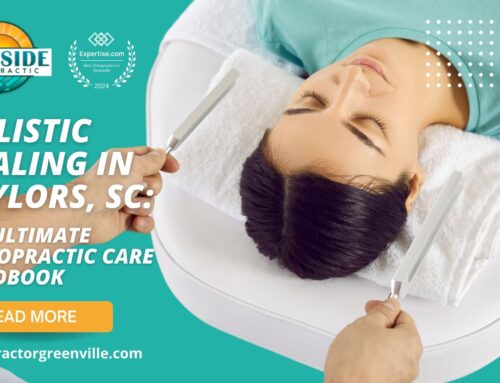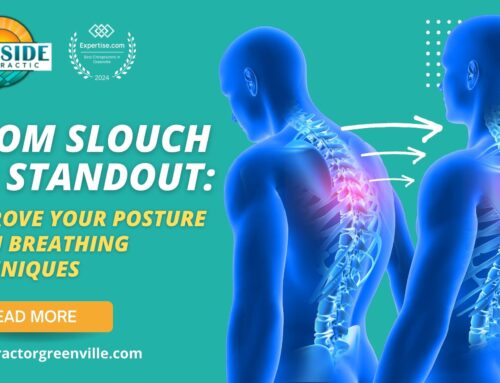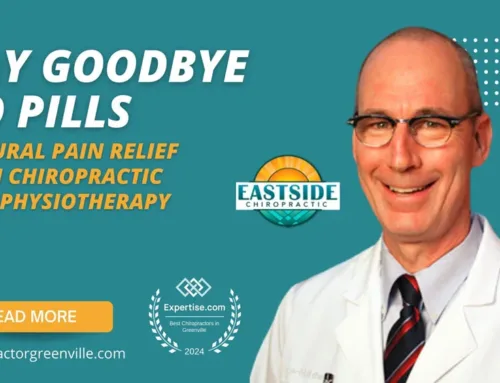Chiropractors Benefit Many Conditions
Chiropractors can help people with musculoskeletal conditions like low back pain, neck pain, many types of headaches and sports injuries. In fact, For more than 35 years, our Greenville SC chiropractor, Dr. David H. Mruz has specialized in effective chiropractic care and techniques, and has provided excellent results for individuals in South Carolina, including many professional athletes and musicians.
This is a fact that is undeniable. It is also undeniable that the vast majority of people who see a doctor of chiropractic are satisfied with their experience.
This is gratifying to me as a chiropractor Greenville SC who has served my community for over 35 years, but there remains a concern about a minority of chiropractors who make unproven health claims or push unreasonable chiropractic care based upon outdated or disproved concepts of spinal bones being out of line.
 In 1895, D.D. Palmer founded chiropractic on the premise that spinal bones become misaligned, or “subluxated,” less than dislocated, and that aligning or “correcting” them takes pressure off the spinal nerves, allowing vital nerve energy to flow to the entirety of the human body. To be clear, subluxation is a medically-understood entity, but even today, many chiropractors consider even the slightest vertebral alteration to be a subluxation. The reality is that there is no strong correlation between misaligned vertebrae and health, no proof that vertebrae become realigned, and even if miniscule or grand subluxations are observed; whether or not there might be any health consequences. Moreover, there is no singular, objective, valid test to detect chiropractic subluxations despite over one hundred years of looking.
In 1895, D.D. Palmer founded chiropractic on the premise that spinal bones become misaligned, or “subluxated,” less than dislocated, and that aligning or “correcting” them takes pressure off the spinal nerves, allowing vital nerve energy to flow to the entirety of the human body. To be clear, subluxation is a medically-understood entity, but even today, many chiropractors consider even the slightest vertebral alteration to be a subluxation. The reality is that there is no strong correlation between misaligned vertebrae and health, no proof that vertebrae become realigned, and even if miniscule or grand subluxations are observed; whether or not there might be any health consequences. Moreover, there is no singular, objective, valid test to detect chiropractic subluxations despite over one hundred years of looking.
Changing Chiropractors, Changing Times
By the mid 1900s, some chiropractors were beginning to break away from the subluxation model, redefining chiropractic as a healthcare practice and profession — not merely a technique to “correct” subluxations. They addressed nutrition, ergonomics and pain management and appreciated spine dysfunction and pain without catering to subluxation theory. Modern chiropractic understands the subluxation to be a complex process resulting in joint motion abnormalities, compressed or irritated nerve structures, muscle spasm or weakness, inflammation and ultimately degeneration and fibrosis (scar tissue), rather than an event of a bone going out of place. This new direction in chiropractic has been embraced by many in other healthcare fields, and the team approach to care with chiropractors and medical doctors working together for the good of the patient is being created in many cities and towns.
Thankfully, more chiropractors are rethinking the outdated and flawed subluxation paradigm, but some in the profession still will not. Visit some chiropractic websites and you’ll see catchphrases such as “subluxation correction” and even claims of “taking pressure off nerves,” or how “correction” can cure all sorts of illness, from asthma to autism. Some insist that people obtain weekly spine adjustments (without regard for clinical need) for the rest of their lives and prey on the implication that if they don’t it will lead to illness.
When a patient comes to me after having treatment by some chiropractors, I often have to address their notions that they have a bone “out of place’ in their neck or low back, and if I’ll simply “pop it back” in place that they’ll be fine. They will often have a history of this cycle repeating itself over and over through the years.
 If a spinal bone was really out of place, this would qualify as a medical emergency, and the unfortunate patient wouldn’t have had the ability to even arrive at my office. While the simplistic explanation of a bone being out of place along with the chiropractic adjustment causing a joint “pop” sound may allow for the quick and easy explanation of “bones going back in place”, the truth of what is happening takes a bit more explaining. While still simplistic, I use an illustration that sounds something like this: Joints in the body all have a role to play in normal body motion. When some joints in the spine begin to lose proper motion (due to fibrosis or scar tissue from old injuries, degenerative changes to vertebra from long term improper loading, recent trauma, or simple lack of use) then adjacent joint structures begin to take on more than their fair share of the motion of that region of the spine. This results in joint fatigue, inflammation and pain.
If a spinal bone was really out of place, this would qualify as a medical emergency, and the unfortunate patient wouldn’t have had the ability to even arrive at my office. While the simplistic explanation of a bone being out of place along with the chiropractic adjustment causing a joint “pop” sound may allow for the quick and easy explanation of “bones going back in place”, the truth of what is happening takes a bit more explaining. While still simplistic, I use an illustration that sounds something like this: Joints in the body all have a role to play in normal body motion. When some joints in the spine begin to lose proper motion (due to fibrosis or scar tissue from old injuries, degenerative changes to vertebra from long term improper loading, recent trauma, or simple lack of use) then adjacent joint structures begin to take on more than their fair share of the motion of that region of the spine. This results in joint fatigue, inflammation and pain.
 My focus in treatment is the restoration of motion to fixated spinal joints along with the stabilization of joints which have been moving too much. Spinal manipulation or adjustment alone doesn’t address joint instability, so rehab procedures become a part of my treatment to help a patient stabilize their unstable spine. The sole reliance upon spinal adjustment by some chiropractors as the only method of chiropractic care offered never allows a patient to finally get beyond the recurring cycle of fixation/hypermobility/pain. Indeed, patients may share some responsibility for this cycle since many are reluctant to change poor postural, exercise and stretching habits which underlie their painful joint problems in the first place.
My focus in treatment is the restoration of motion to fixated spinal joints along with the stabilization of joints which have been moving too much. Spinal manipulation or adjustment alone doesn’t address joint instability, so rehab procedures become a part of my treatment to help a patient stabilize their unstable spine. The sole reliance upon spinal adjustment by some chiropractors as the only method of chiropractic care offered never allows a patient to finally get beyond the recurring cycle of fixation/hypermobility/pain. Indeed, patients may share some responsibility for this cycle since many are reluctant to change poor postural, exercise and stretching habits which underlie their painful joint problems in the first place.
The bottom line? When seeking chiropractic care, be sure to ask questions. Look for evidence-guided, outcomes-based models of chiropractic care as employed at facilities such as the US Olympic Training Center, the Veteran Affairs medical centers, the NFL and pain management and orthopedic facilities nationwide where the term “subluxation” is not part of the lexicon. You’ll have your best opportunity to finally get beyond your pain.
Eastside Chiropractic PA
3014 Wade Hampton Blvd., Taylors SC 29687
864-292-6777




